What causes a motor start error in my Waeco Refrigerator?
- JJenny LucasSep 8, 2025
A motor start error in your Waeco Refrigerator indicates that the rotor is stuck or the differential pressure in the cooling system is too high (greater than 5 bar).
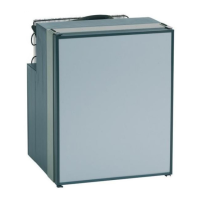
What causes a motor start error in my Waeco Refrigerator?
A motor start error in your Waeco Refrigerator indicates that the rotor is stuck or the differential pressure in the cooling system is too high (greater than 5 bar).
Why is the RPM too low in my Waeco CoolMatic MDC-50 Refrigerator?
The RPM being too low in your Waeco Refrigerator means that the minimum motor speed of 1900 RPM cannot be maintained because the cooling system is overloaded.
What to do if the cooling capacity drops in my Waeco CoolMatic MDC-50 Refrigerator?
If the cooling capacity of your Waeco Refrigerator is dropping and the interior temperature is rising, here's what you should check: The vaporiser might be iced over, in which case you should defrost it. Also, high ambient temperatures or insufficient ventilation can cause this issue; move the cooling device to improve ventilation. A dirty condenser can also reduce cooling efficiency, so clean it. If a fan is installed, ensure it's working correctly; if it's defective, replace it. Finally, check if the battery capacity is exhausted and charge the battery.
Why does the electronic unit of my Waeco CoolMatic MDC-50 shut down due to thermal overload?
The electronic unit of your Waeco Refrigerator might shut down thermally if the cooling system is overloaded or the ambient temperature is too high, causing the unit to overheat.
| Gross capacity | 50 liters |
|---|---|
| Freezer compartment | No |
| Weight | 19 kg |
| Refrigerant | R134a |
| Type | Compressor refrigerator |
| Voltage | 12/24 V DC |
| Average power consumption | 45 W |
| Current consumption | 3.75 A |
| Temperature range | +10°C to -18 °C |
| Material | Plastic/Metal |
Explains the meaning of various symbols used in the manual for safety and operational guidance.
Outlines conditions for which WAECO International is not liable for damages, including mechanical influences and unauthorized modifications.
Provides essential safety guidelines for installation, repair, operation environment, and handling of the device.
Ensures the operating voltage and battery voltage match the device specifications before initial startup.
Details crucial safety measures for operating the device, including electrical hazards, moisture protection, and child safety.
Lists the components included in the product package, such as the refrigerator unit, hinge kit, and manual.
Identifies rectifiers required for operating the cooling device with a 230 V AC mains supply.
Details the device's compatibility with 12V/24V DC, thermostat control, material compatibility, and marine use limitations.
Explains the function of the temperature controller, error code LED, and operating panel on different models.
Provides guidelines for selecting a suitable installation location, emphasizing dry conditions and adequate ventilation.
Describes the locking mechanism for securing the door during transport and for ventilation during storage.
Step-by-step instructions for changing the door hinge to allow opening from the left side.
Instructions for changing the decorative plate on the cooling device to enhance its appearance.
Details the electrical connection process, referencing the wiring diagram and identifying terminal rail and components.
Guidance on connecting the device to 12V/24V DC battery sources, including cable selection and polarity checks.
Explains the device's electronic protection against polarity reversal and low voltage, including automatic switch-off/on.
Instructions and safety warnings for operating the device using a 230V AC mains connection via a rectifier.
Recommends cleaning the device before first use for hygienic reasons, referring to the maintenance chapter.
Provides practical advice for optimizing energy consumption, such as ventilation, pre-cooling food, and minimizing door openings.
Details the process of switching the device on and the approximate time for the compressor to start.
Explains how to adjust the temperature using the knob and factors affecting cooling capacity, like ambient temperature and door openings.
Guidance on storing food, including avoiding warm food, using airtight containers, and understanding temperature zones.
Advises on proper food wrapping techniques to maintain aroma, shape, and freshness.
Describes how to use the locking mechanism to prevent the door from opening inadvertently.
Provides instructions on how to defrost the device, including safety warnings against using hard tools.
Outlines the procedure for switching off the device for long-term storage, including cleaning and ventilation.
Warns against using abrasive agents or hard tools for cleaning and emphasizes drying the device after cleaning.
Explains the warranty period and the documentation required for repair and guarantee processing.
Advises on safe disposal practices, considering flammable insulating foam and local recycling regulations.
Lists error codes indicated by the LED, their types, and possible causes for system faults.
Identifies faults related to the compressor not running, their causes, and recommended remedies.
Addresses issues where the interior temperature is too low, with faults like constant compressor running and their causes.
Diagnoses problems with reduced cooling capacity and rising interior temperatures, including iced vaporizers and ventilation issues.
Helps identify the causes of unusual noises, such as humming, from refrigerant circuit components or foreign bodies.
Lists general features applicable to all MDC series refrigerators, including voltage, temperature ranges, and inclination limits.
Provides detailed technical data for each model (MDC-50, -65, -90, -110), including capacity, dimensions, and weight.

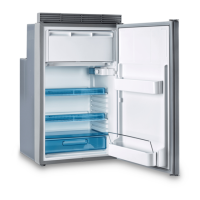

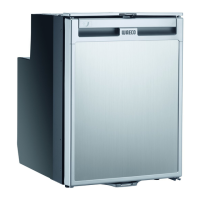
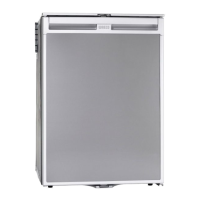
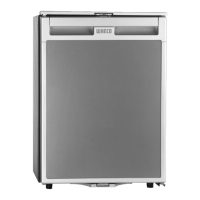
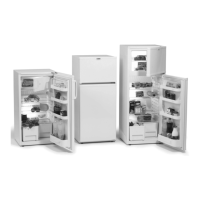
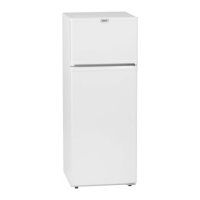
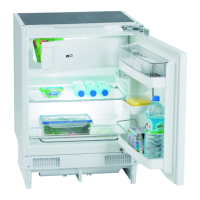
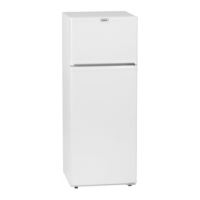
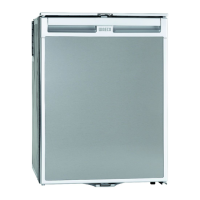
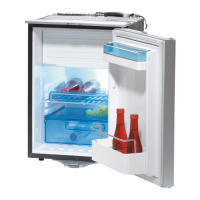
